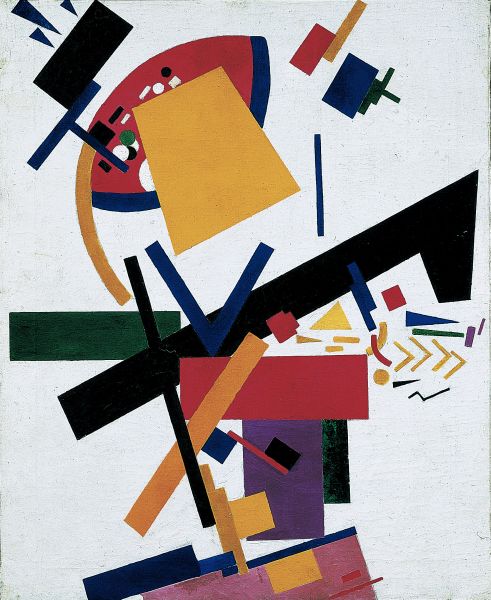|
|
Suprematism. 1915

Malevich Kazimir,
Oil on canvas
87,5 х 72
State Russian Museum
Пост.: 1926 из МХК, Ленинград
Annotation
This composition consists of dynamic links of coloured geometric figures – a rectangle, square, circle and cross. Intersecting one another and existing in harmony, they are the letters of the universal language invented by Kazimir Malevich and called Suprematism. Malevich’s Suprematist movement developed the idea of the supremacy of the ultrapersonal essence of art. The “constructions” that comprise the composition of the picture, hovering in the white space of the background, personify the artist’s concept of an infinite universe. There is no tap or bottom in the picture. Nor is there any hint of narration. The artist creates a new reality, a sort of das Ding am sich, the existence of which is confined to the frames of the canvas. Suprematism is rich in colour and contains an aggressive emotional charge. Its impact on the viewer confirms the words of Nikolai Khardzhiev that “the word Suprematism implies the supremacy of the colour problem.”
Author's Biography
Malevich Kazimir
Malevich, Kazimir Severinovich (1878, Kiev - 1935, Leningrad)
Painter, graphic artist, writer on art, portraitist, landscapist, abstractionist. Studied at the Kiev School of Art (1895-1896) and Fyodor Roehrberg's studio in Moscow (1906-1910). Contributed to exhibitions (from 1905). Contributed to the exhibitions of the Moscow Fellowship of Artists (from 1907), Donkey's Tail (1912), Target (1913), Der Blaue Reiter (1912), Salon des Independants (1914), Tramcar V. First Futurist Exhibition (1915) and 0,10. Last Futurist Exhibition (1915-1916). Designed the sets and costumes for the Futurist opera "Victory Over the Sun" (1913). Member of the Union of Youth (1910) and Jack of Diamonds (1910, 1916). Founded the AFFIRMES OF THE NEW ARTgroup (1920). Worked for Department of An People's Commissariat of Education (1918-1919). Director of the Museum/Institute of Artistic Culture in Petrograd/Leningrad (1923-1926).

